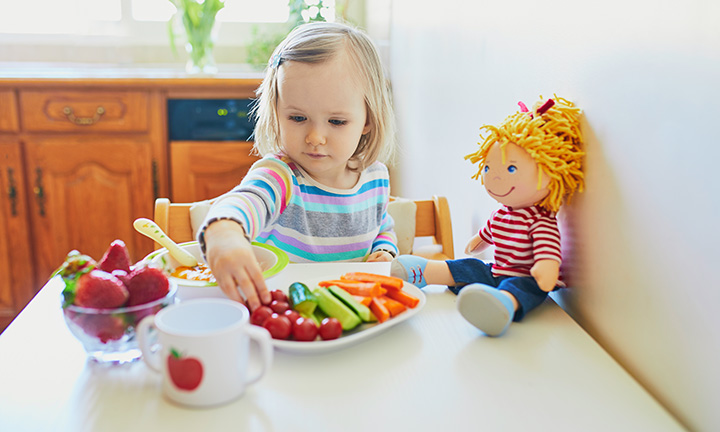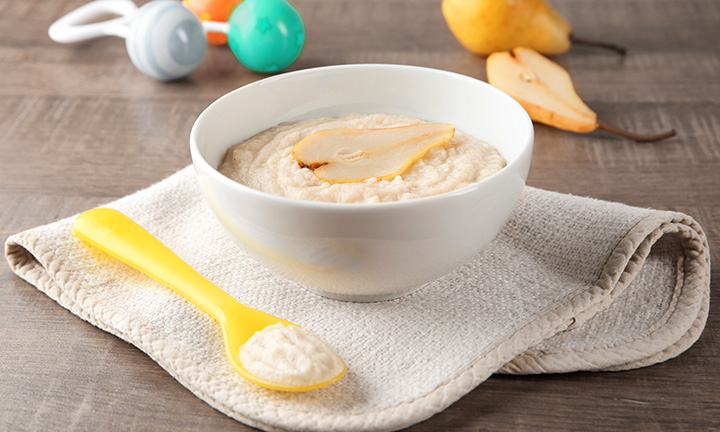
The Best Finger Foods for Babies
How exciting that your baby is about to graduate from mushy foods to finger foods! This is a big step in your little one’s development. However, you may be wondering when’s the right time to start finger foods, and how to tell that your baby is ready. We’ll answer all these questions and more, plus give you a list of the best finger foods to introduce to your baby first.
Introducing Finger Foods to Your Baby
So, when can babies eat finger foods? You can start to give your baby finger foods around the time they’re able to sit up independently and can bring their hands to their mouth. This may happen between the ages of 8 months old and 9 months old, but your baby may be ready a little sooner or later than this time. Around this time, you may also notice that your baby is developing their pincer grasp and may be making chewing motions. These are both great indications that your baby’s ready for finger foods. Moreover, using their fingers to pick up foods will further develop your baby’s fine motor skills. Some parents who adopt the baby-led weaning approach may start offering finger foods to their infants as early as 6 months old. This method skips spoon-feeding with solid foods and instead lets your baby take the lead in self-feeding with finger foods. Some believe this approach can decrease fussiness when it comes to introducing new foods, including finger foods, to your baby. Speak to your child’s healthcare provider if this method is something you’d like to try. Giving your baby finger foods can help your little one learn to feed themself, just one step toward gaining independence. Self-feeding can be great fun for your baby. Even if much of the food doesn’t end up in your baby’s mouth, the fact that they’re exploring this new frontier is an accomplishment to be proud of.
In Summary
You can start to introduce finger foods to your baby when they can sit up independently, which may happen around 8 or 9 months of age. Picking up finger foods will be a great way for your little one to perfect the pincer grasp and develop fine motor skills.
First Finger Foods for Your Baby
As you begin choosing finger foods for your baby, check out the following ideas:
Be sure that any of the above finger foods are cut into small pieces. You don’t want your baby eating a piece that’s too big to swallow. And, make sure to watch them while eating.
In Summary
Foods cut into small pieces in a variety of flavors, colors, and textures are all great finger foods to try first with your baby. These can include steamed veggies; soft fruits; whole-grain pasta, bread, or crackers; chicken; cheese; and scrambled eggs.
Finger Food Safety
During this time babies are more likely to swallow foods without chewing them, whether they have a few baby teeth coming in or they have no teeth. Avoid giving any finger foods that require a grinding action to chew (this type of chewing is typically mastered around the age of 4), as these may pose a choking risk. Offer finger foods that are soft, easy to swallow, and broken or cut into pieces that your baby cannot choke on. A good rule of thumb is that soft and mushy finger foods are safe for your baby. Small, round, coin-shaped, hard, chewy, crunchy, slippery, or sticky foods may lead to choking. Here are some foods to avoid offering your baby when they start on finger foods:
There are ways you can still give some of the above foods while making them easier to eat and less hazardous to swallow. For example:
In Summary
Whether your baby has teeth or not, they’ll be more likely to swallow finger foods without first chewing them, which is why it’s important not to offer foods that can cause choking. Choking hazards include chunks of food like peanut butter, meat, or cheese; raw veggies and fruit; whole nuts and seeds; popcorn; gum; candies; and hot dogs.
Note on Food Allergies
Medical experts once recommended that parents avoid feeding their babies eggs, fish, and peanut butter since babies may be allergic to these foods. However, it’s now recommended that you introduce these foods early—while keeping a close watch for any reactions—since this approach can help reduce your child’s chances of developing food allergies. Before introducing peanut butter or peanut products, consult with your baby’s healthcare provider. Your baby is more likely to be allergic to these foods if
Tip
It may be a good idea to introduce foods with known allergens early on. However, if food allergies run in your family, if your baby has already been diagnosed with an egg allergy, or they have eczema, your little one is more likely to be allergic to peanut butter and other peanut products. So, be sure to check with your child’s healthcare provider first before introducing foods that could prompt an allergic reaction.
FAQS AT A GLANCE
Good finger foods for babies include soft, easy-to-swallow foods like steamed veggies; soft fruits; whole-grain bread, pasta, or cereal; crackers; chicken; cheese; and scrambled eggs. It’s important to make sure that whatever you’re serving is cut into small pieces so that your baby doesn’t choke on a piece that’s too big.
The Bottom Line
It’s time to introduce finger foods to your baby when you see that they’re able to sit up on their own, start bringing their hands to their mouth, and can use a pincer grasp to hold onto small items, like finger foods. This development happens around the age of 8 or 9 months old, but you may see it sooner or later in your baby. In the beginning, you’ll want to introduce finger foods that are soft and easy to swallow, since babies at this age tend to swallow instead of chew even if they have a few baby teeth. Think steamed veggies and soft fresh fruits. You can also introduce whole-grain bread, crackers, cereal, or pasta if they’re cut into small pieces. Chicken, mild cheese, and scrambled eggs are also great options when served in small pieces. Avoid hard foods like raw veggies and fruits, as well as chunks of nut butter, cheese, and meat. Whole nuts and seeds are not recommended, nor are chewing gum, candies, hot dogs, or meat sticks. All these items can pose a choking hazard.
Transitioning to finger foods is a big step in your baby’s development and independence. Letting your baby self-feed with finger foods may be a bit messy at first, but you’ll both get the hang of it. Learn more about developmental milestones for your 9-month-old baby.
- AAP
- Mayo baby book
- CDC: Fingers, spoons, forks, cups
- Healthy Children: Starting solid foods
Read more about Baby
Related Articles
Join a World of Support
through Pregnancy and Parenthood.
TRACK WITH TOOLS
LEARN WITH EXPERTS
GET REWARDED











